Op-Ed
After the Pandemic, What’s Next for the Building Industry?

Downtown Chicago, like so many downtowns, has been largely empty to prevent the spread of Covid-19—followed more recently by protests and opportunistic looting (Central Camera, visible in this image, was badly damaged).
Photo: Raed Mansour. License: CC BY 2.0.We queried some big-picture thinkers, and we got some big thinking. Some of it is predictive: exploring what’s likely to happen. But they focused much more on the aspirational: what could happen, if we don’t waste this crisis? In the words of Beth Heider, we need to interrupt our traditional pattern of “solving for the last crisis.” COVID-19, she says, “presents an unprecedented opportunity—a wake-up call—to think differently to solve for the future.”
Dan Slone provides an impressive—if scary—list of all the ways buildings and services are likely to change. Most of them are not conducive to “solutions that broadly promote health and wellness for all life on earth,” in the words of Jason McLennan. Like McLennan, Lance Hosey warns of unintended consequences: “Architects are notorious for getting the future wrong,” he says.
Jane Frederick agrees that “the pandemic will change how our cities and buildings are designed,” with the hope that this redesign comes out of “a renewed and sustained focus on the inextricable connection between human health and the health of our climate.” The AIA is assembling a cross-disciplinary team to work on exactly that.
Jennifer Cutbill and Illya Azaroff are thinking on a larger scale: “As architects, we can reimagine a new future for our communities that is centered on health and wellness,” Azaroff says. In Cutbill’s words: “Our focus needs to shift from individual buildings (as things) to something that better reflects our nested interdependence.” She sees an important role for architects: “Our potential to help redraw the world—in a way that is inspiring and empowering—is part of what sets architects and landscape architects apart.”
McLennan questions whether traditional design approaches are the best way to solve for the immediate challenges from COVID-19: “I’d argue it is one best solved by medical policy, national and state policy, and personal behaviors,” he says. “Long term, installing plexiglass everywhere to separate people and create ‘others’ we are wary of is a fear-based reaction that will exacerbate other social problems, such as racism, and economic and health disparities,” he warns. “It is essential that post-pandemic we find ways to deliberately bring people together again, not keep them apart.”
Familiar strategies for greening buildings are still relevant, notes USGBC’s Taryn Holowka: “What we’re experiencing now reinforces how important it is to have buildings and spaces that improve indoor air quality, reduce pollution, and use low-emitting materials that lower our exposure to toxins and pollutants.” But, she says, we also “need to examine everything through new eyes.”
Among the new things we can now see is how resilient we are, notes Clark Brockman: “we are altering our social norms, en masse, overnight—manifesting an unprecedented behavior change on a global scale.” We’re also seeing how quickly nature can bounce back, demonstrating how “our individual actions, in combination with our collective actions, do make a difference.”
In the words of Ed Mazria: “By working together with a shared vision, what once seemed unreachable is suddenly within our grasp, becomes our reality, and is a welcome gift as we reshape our world.”
See each of their full comments below, and share your own. We’re all in this together.
–Nadav Malin
Elizabeth Heider, FAIA Chief Sustainability Officer, Skanska USA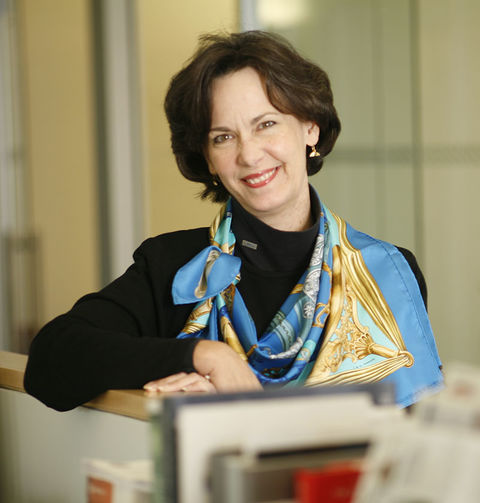 Elizabeth Heider
Elizabeth Heider
The COVID-19 crisis is an acute problem that threatens human existence. Mother Nature has our undivided attention. For now. The public and private sectors are waging war to return to some semblance of normal. The world is focused on overcoming one threat and fighting it on at least two fronts: social (health) and economic. Once therapies and a vaccine are widely available, COVID-19 will become the last crisis. What do we do next?
Stop solving for the last crisis. Codes and legislation are layered with well-intended requirements to avert problems we have faced in the past. Layer upon layer, they often have unintended consequences. For example, research tells us that improved ventilation is important to address airborne pathogens. Ventilation is a hot topic right now in light of the pandemic. OK, we can solve for that. We can create stricter codes for ventilation. But wait—we also know that circulating higher volumes of outside air requires that we heat/cool/de-humidify that air, which requires energy. Unless the energy source is 100% renewable, more energy means we are emitting more carbon dioxide into the atmosphere. More carbon equals more pollution, which exacerbates the chronic condition of global warming. Global warming is a clear threat to the third front (environment). And when the environment is severely compromised, there follow social and economic consequences.
Not minimizing the human and economic losses COVID-19 is wreaking, it presents an unprecedented opportunity—a wake-up call—to think differently to solve for the future.
The AEC community, our customers, investors, insurance and financial industries, our supply chain, and regulatory agencies, need to continue to break down historical silos and work together. In January 2013, the U.S. Green Building Council (USGBC) convened a summit on Green Building and Human Health. It was perhaps the first convening of public health and green building professionals together. USGBC continues to address green building and human health broadly through the LEED rating system. The WELL rating system takes a deeper dive into building attributes, and occupant policies and behaviors that support and promote human wellness. The Living Building Challenge’s framework took an early and strident position on healthy materials as but one petal of its green building metric. The Envision system provides a flexible leadership framework that can be tailored for a wide variety of infrastructure projects. All of these tools and the organizations that steward them are elevating the field of play in our industry and are catalyzing positive change. They are forward-thinking. They challenge us to work more collaboratively, and think more strategically and holistically about solving problems. To invest in and solve for the future.
If we dare to shift from the pre-COVID perspective of a Venn diagram, where people and the planet sit within the economy, to one post-COVID, where the environment encircles people within which rests the economy, we might find the courage to solve for a better future.
We have tools that can lead us to a more sustainable future. We just have to find the courage to reconsider our priorities, work together, use and perfect the tools we already have.
Dan Slone Lawyer & Vision Wallah, Vertical Vision PLC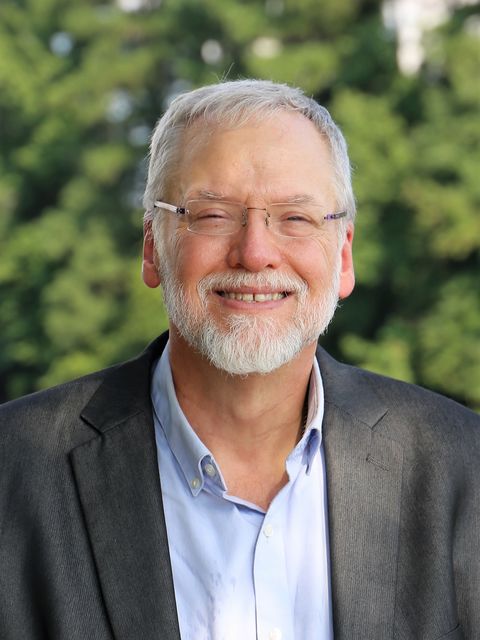 Dan Slone
Dan Slone
There’s the stuff that will change permanently, the stuff that’s temporarily different, and the stuff that is difficult to predict because it should change, but the counter-pressure for a “return to normal” will be strong.
The disappearance of non-experiential restaurants will accelerate, leaving holes in shopping centers and main streets but creating opportunities for less expensive “industrial restaurant” space and shared “experience space” serviced by deliveries. Building layouts will be designed for the flexibility of temporary drive-thru lanes, car stacking, curbside service, six-foot separation queuing, and sneeze-guard barriers wherever necessary for customer or employee safety. Security features will increase because everyone is in a mask. Workplaces will downsize, planning for and facilitating more ability to work remotely. Homes will change in design to accommodate multiple simultaneous online students and remote workers. Adaptation for no-contact delivery will accelerate. Shared plenums and shared HVAC will be suspect. There will be a greater awareness of the surface materials and their ability to be maintained and disinfected. Material choices in hotels, theaters, stadiums, and public buildings will fundamentally change with lots of retrofits. Eldercare facilities will be completely redesigned. Because of the increase in exposure to the chemicals of virus response in all environments, there will be greater awareness of chemical overload and a desire to understand what chemical exposures are unnecessary in buildings.
Waiting rooms, airport concourses, theaters, and other performance venues will explore what flexibility they have for managing social distancing only when required or desired.
This is the tip of the iceberg. Offices will deal with mask and distancing etiquette, furnishing appropriate equipment to workers, the rights of anti-vaxxers and those around them, sick-leave policies, virtual conferences, the disappearance of many non-profits, virus PTSD, changes in jobsite culture, the rise of remote sensing and viewing, liquidity challenges, and the increase of mergers and acquisitions. Cybersecurity will be paramount for the AEC offices and their clients as all are awash in health data, as well as locational, contact, and identity data.
The watchword will be flexibility. Health will lead general sustainability as a concern for a while, though carbon, energy, water, and waste will continue to be significant discussions. Resilience assessment will accelerate and will increasingly include health and social equity measures. Having seen the response of wildlife and nature when humans withdraw their impacts, there will be more discussion of preserving the space for others to share in the human realm.
Lance Hosey, FAIA Principal, Design Director, and Global Co-Director of Design Resilience (Sustainability), Gensler Futureproofing Futureproofing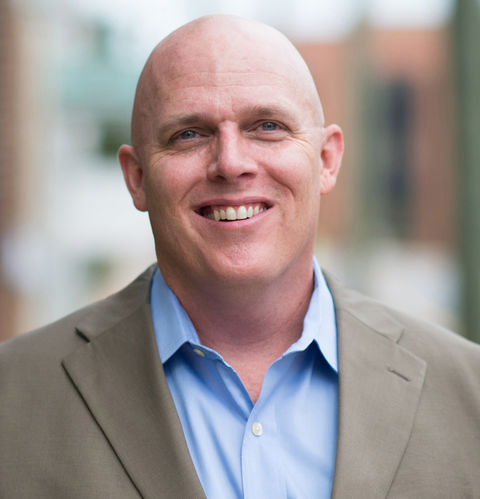 Lance Hosey
Lance Hosey
Architects are notorious for getting the future wrong. Think of Frank Lloyd Wright’s Broadacre City vision (1932): nearly a century later, flying cars still aren’t a thing.
The current crisis is no different. Over the past couple of months, many architects have proposed post-COVID strategies that include, for example, products that supposedly keep you safe from viruses. Aside from the fact that such proposals do not always reflect scientific consensus, often they are intended to kill microorganisms, the vast majority of which are necessary for our survival.
Such unintended consequences remind me of the energy crisis in the 1970s. One response was to improve energy efficiency in buildings by hermetically sealing them and decreasing air changes inside. The result was the build-up of particulates and mold, lowering air quality and creating Sick Building Syndrome, a widespread problem in the ’90s. We may be in the reverse situation now; to address the public health crisis, we may have no choice but to employ energy-intensive strategies that might be good for us but bad for climate.
On the other hand, according to carbonbrief.org, 2020 is on track to becoming the single largest annual drop in emissions ever recorded. In a matter of weeks, global quarantines have dramatically cut greenhouse gases by virtually eliminating commuting and shuttering many buildings. Air quality has improved so much that, for the first time in decades, the Himalayas are visible from major cities in India.
The lives lost or altered by the pandemic are tragic, but we also have seen just how big a difference can be achieved in a very short period. What can we learn from this dark moment to make the future brighter?
Ten years ago, in the middle of the last recession, for my then-column in Architect magazine, I asked, “What Could the Next Decade Hold for Architecture?” (April, 2010). The points I outlined then still apply: strengthen the ability of the architects to serve communities, guide our clients with conscience, and work to improve the impact of the built environment in every way possible.
The profession can weather any crisis if we focus first on how to help people.
Jane Frederick, FAIA 2020 President, American Institute of Architects Jane Frederick
Jane Frederick
The most important changes will include a renewed and sustained focus on the inextricable connection between human health and the health of our climate. Architects can design the solutions to adapt to whatever our new reality includes, but we must build upon what we’ve learned to keep our communities healthy, sustainable, and resilient. The pandemic has brought to light, to a whole new audience, the value of structures that can sustain themselves independent of public utilities. Between catastrophic weather events and global pandemics, green buildings are more important now than ever before. Guidelines such as the WELL Building Standard and the AIA’s Framework for Design Excellence—which focuses on the important fact that design is not just about aesthetic components but how buildings perform for people—will play an important role in creating healthy buildings.
We know that the pandemic will change how our cities and buildings are designed, as experienced in past pandemics. We all can imagine changes for an increasing demand for building materials that are naturally antimicrobial, like brass door handles and copper plumbing. Better-quality HVAC systems that utilize higher rated filters and increase the air changes in the building will also increase in demand. Greater access to outdoor spaces in courtyards, terraces, and balconies, and operable windows, which provide the connection to fresh air. Biophilic designs to reduce anxiety and stress will be more important than ever.
Office buildings will change layouts to reduce pinch points at stairs and elevators and create more space between desks in open layouts. This can potentially be achieved by more flexible remote working policies.
Schools probably will have the biggest changes since studies show that viruses spread at a greater rate in the schoolroom setting than in other places. There will probably be fewer children per classroom, which will have a positive impact on student learning.
To this end, the American Institute of Architects is assembling a virtual team of experts that will include public health experts, architects, facility managers, and engineers who will collaborate to develop innovative 1) immediate and 2) long-term strategies—behavioral, structural, spatial, material, and operational—that will mitigate health and safety risks in buildings and support resiliency for future shocks and stresses. In an effort to provide information efficiently, the team will focus on four categories of buildings that share similarities and are central to our communities:
- offices, commercial spaces;
- schools, daycares, libraries;
- multipurpose housing, mixed-use buildings, including apartment buildings, dorms, senior living, and hotels; and
- restaurants and stores.
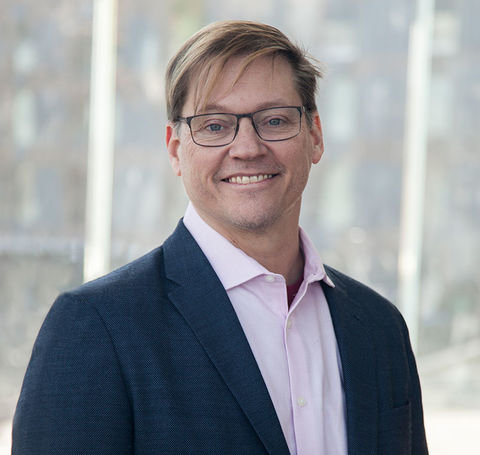 Illya AzaroffPhoto: © A Hitzenberger
Illya AzaroffPhoto: © A Hitzenberger
I believe we are at an inflection point, similar to the moment after Hurricane Sandy, due to this pandemic. Every aspect of the built environment will be examined in support of health and wellness, questioning former best practices. Occupancy load to air quality and energy efficiency will be at odds as we work through to a better, transformative way to design to address future biological shocks. This is a fundamental rethinking and retrofit of buildings throughout the world as we prepare for more of these shocks in the future. Space requirements per person will change, size of rooms may change, and existing buildings will need great care to meet these criteria and remain functional.
The way we work post-pandemic harkens to mind the notion of “kicking and screaming into the twenty-first century.” We have largely held onto late-twentieth-century work and building practices in spite of technological advances. With the virus and distancing it brings, we have now been forced to embrace the technologies that have been invented in the past twenty years and perfected in the last ten. We no longer need to travel as much, go to meetings as much, to be productive. Remote technologies and monitoring equipment save time and keep distance. The same can be said of office culture as we shift and perfect “work from home” options and protocols.
Travel to conferences will be greatly reduced; continuing education delivery for design professionals has already transformed in this short few months, as has our short-term carbon footprint.
Building departments are embracing electronic filing fully; AI plan review and other elements remove and ultimately speed planning approval processes. These are not new technologies, yet it has taken this moment to recognize the powerful impact they can have. We are learning a hard lesson through this tragic time as we shed the remnants of twentieth-century work and build practices. We cannot go back to the old normal as it no longer exists; however, as architects we can reimagine a new future for our communities that is centered on health and wellness.
Jason McLennan CEO, McLennan Design; Founder, Living Building Challenge / International Living Future Institute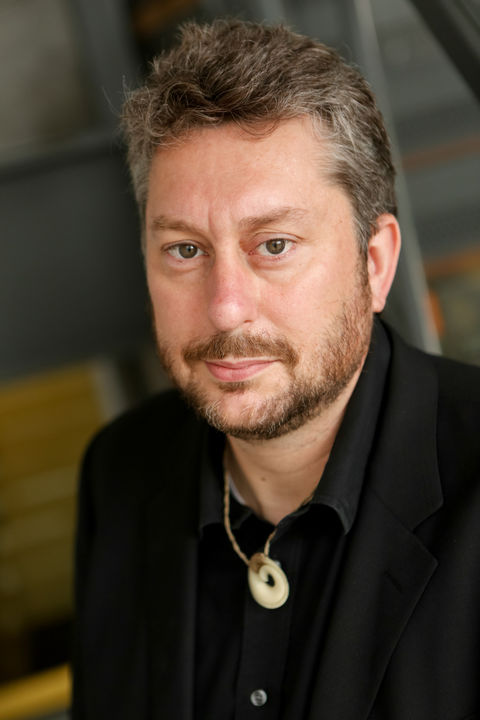 Jason McLennan
Jason McLennan
The AEC industry should rapidly accelerate a trend that began with the rise of green building: designing buildings based on life’s principles. These fundamentals have not changed, nor will they, so we need to recognize and apply them in all we build. The International Living Future Institute converts this philosophy into the tools, standards, and education designers need, most notably in the Living Building Challenge.
As we think about changes post-pandemic, architects should first take a critical eye to the problem being addressed and determine if design is central to its solution. The world is full of challenges, and Covid-19 is certainly one, but I’d argue it is one best solved by medical policy, national and state policy, and personal behaviors.
To the extent the built environment can contribute to solutions, the International Living Future Institute will remind people where society needs to head, and the solutions that broadly promote health and wellness for all life on earth, including people. Reactionary responses risk exacerbating the problem or causing other unintended consequences.
For example, after September 11th there was a rush to make buildings “terrorist-proof” by adding bollards, blast distances, and huge setbacks from wherever cars could drive. Had we followed this thinking to its logical conclusion everywhere, we would have destroyed the urban fabric that is critical to making great places. Trying to combat terrorism through design misses the underlying socio-political causes and creates cures that exacerbate the problems. It gives into fear that can do real harm to daily lives.
When it comes to COVID-19, there may be a similar rush to both overstate architecture’s role and to respond based on fear to sanitize and keep people apart. This is the world’s first truly shared experience. It is affecting all nations simultaneously in an era where we have instant communication across social networks. We’ve never experienced anything like it.
At the Institute, we want to show how to respond with love, not fear, and to find solutions that are truly holistic and life affirming. This is what the Living Building Challenge is all about. People are social creatures; we need human interaction to thrive, which is one of life’s immutable principles.
Long term, installing plexiglass everywhere to separate people and create “others” we are wary of is a fear-based reaction that will exacerbate other social problems, such as racism, and economic and health disparities. It is essential that post-pandemic we find ways to deliberately bring people together again, not keep them apart. If we have learned anything, it’s that we are all in this together; we sink or rise together.
Should we use antimicrobial materials everywhere? Well, the rise in “super bugs” is correlated with the rise in antimicrobial materials and chemicals. And most simple life forms are not just benign, but necessary for life. So as we rush to try and make things safer, we actually undermine our well-being. As we articulate a direction for the future, we have to find a way to recognize these relationships.
As another example, the “Red List” of hazardous chemicals represents compounds that violate life’s principles. Their risks to human and environmental health will continue, and the Living Building Challenge will continue to restrict their use. Are there other ways to promote healthy indoor spaces without relying on chemicals known to cause human and environmental harm? Yes, we know that increased natural daylight and operable windows increase the health of occupants. What other biophilic elements can we bring into our buildings?
This pandemic is very serious, but it is much more about our cultural resilience, our human and political behaviors, social and medical policy, animal welfare, and ultimately climate change and our relationship with life itself.
This moment creates an opportunity to think about what we build and to apply life’s principles. At the International Living Future Institute, we will continue to envision a truly sustainable future and develop the tools needed to get there.
Taryn Holowka Senior Vice President, Marketing, Communications & Advocacy, U.S. Green Building Council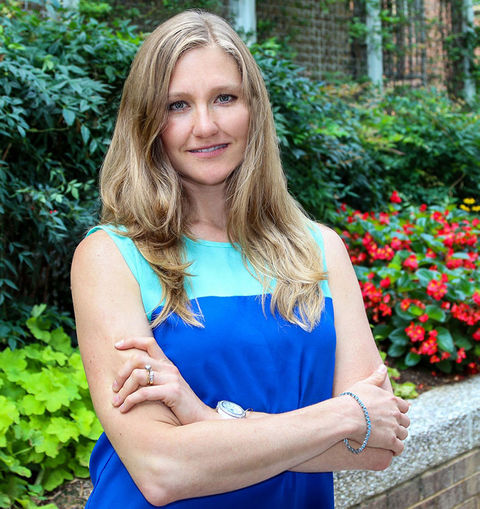 Taryn Holowka
Taryn Holowka
The pandemic has been a devastating situation to watch unfold, and my heart is with everyone who has been impacted. While the long-term effects of this remain to be seen, it will undoubtably change the way we live and do business. The question for the green building industry is how will we evolve? At the U.S. Green Building Council, we believe better buildings lead to better lives, and we’ve seen how each new LEED-certified project is part of improving the living standard for all. The value proposition for green building remains strong. The connection between buildings, health, and the environment is central to the green building conversation—and as we look ahead, we know that the industry will play a critical role in creating healthier, more resilient, and equitable communities.
We have entered a period of disruption. USGBC is reexamining its own policies and practices so we can leverage LEED and the community implementing the rating system to support buildings and communities in a post-pandemic world. We need to consider what new challenges our work can address and what are the best ways to move forward. In the coming weeks, we’ll be releasing new LEED pilot credits as a first step, and have outlined a number of immediate and long-term actions as part of our newly released vision, Healthy People in Healthy Places Equals a Healthy Economy.
We know things change when people change, so as an industry we must all be open to designing, constructing, and operating differently. This means being agile and ready to make room for new ideas and practices. We need to examine everything through new eyes, from ventilation and materials to how people touch and use surfaces throughout a building. In a post-COVID world, it must all be up for discussion.
But while we consider what needs to change, we also cannot lose sight of the existing sustainability practices that are part of building a strong foundation that supports our health. What we’re experiencing now reinforces how important it is to have buildings and spaces that improve indoor air quality, reduce pollution, and use low-emitting materials that lower our exposure to toxins and pollutants. These are basic strategies that support people and ones every project team can prioritize moving forward. This becomes even more important when you consider our most vulnerable communities. We need to ensure solutions address the social, health, and economic disparities. Equity is a major priority for USGBC, and from May 28–29 we’re hosting a listening event to help generate ideas and solutions. We look forward to the green building industry’s participation.
The other factor in all this is partnership. USGBC has always believed that partnership is the new leadership, and getting through this will require us all to come together—virtually for now—in order to chart the best path forward for a healthier, more sustainable future.
Clark Brockman, Assoc. AIA Principal, SERA The coronavirus offers us training in resilience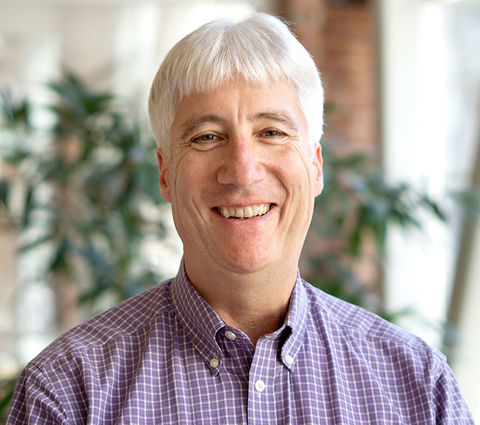 Clark Brockman
Clark Brockman
Faced with so many of our planet’s societal systems being stressed, and even broken, by COVID-19 (e.g., health care and food systems), it’s compelling to note the resiliency of our species, and of Nature’s systems. As humans around the world perceive new threats from social contact and gathering, we are altering our social norms, en masse, overnight—manifesting an unprecedented behavior change on a global scale. And as we all sheltered in place and started shifting our connections to the digital realm to slow the virus’s spread, we also began to witness sudden and dramatic improvements in the natural world, from newly cleared skies to wild animals exploring the places evacuated by people, with these changes also happening over just a few short weeks. Nature (which we’re fundamentally a part of) is naturally, intrinsically, resilient.
What lessons does COVID-19 offer us about our world? We’re learning that we humans can make huge changes quickly, radically adapting our lives when faced with clear and present danger, and that Nature’s ability to bounce back, to recover and restore itself, is still incredibly robust. No event, in the history of humanity, has ever demonstrated this more clearly than the coronavirus. It may be (simultaneously) teaching all 7.8 billion of us something we haven’t been able to grasp before now: our individual actions, in combination with our collective actions, do make a difference.
Nature’s systems are fractal, nested one inside the other, with different scales of activity all contributing to the whole. We’re now seeing our society’s systems of individuals, neighborhoods, cities, counties, and states all over the world working together (at least to some degree) to solve a complex problem. (There are examples of national governments in sync with their states and cities [e.g. New Zealand], but many countries, including our own, are struggling in this regard.)
Going forward, this has big implications for our species and will be critical as we face down other global systems crises that, for a variety of reasons, aren’t yet perceived as clear and present dangers. These lessons will be relevant for our responses to climate change, global hunger, poverty, and more. It’s essential that governments at all levels globally cooperate and collaborate as we confront the large system threats that face humanity and nature. Even with the current glaring dysfunctions, there are reasons to hope, especially right now during this rare and precious moment when the coronavirus has the world’s focused attention. For the first time ever, we all know that our individual and collective actions can “bend the curve.” So now, we all must receive this lesson and apply it to the other systemic challenges we all face.
Ed Mazria, FAIA Founder and CEO, Architecture 2030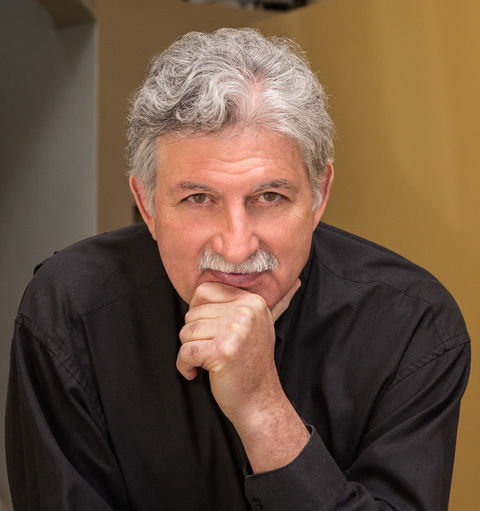 Ed Mazria
Ed Mazria
An unexpected crisis of this magnitude brings with it a remarkable opportunity for our community. We know the COVID-19 pandemic is already changing the way we live and conduct business, affecting the way we will design and ultimately the way we build. As temperatures continue to rise and many are still sheltering in place, we are again reminded of the need for dramatic action to mitigate the other crisis—the climate crisis—we already face. We must remind ourselves that all the elements to bring forth a brighter, more promising future are here now: affordable clean energy, housing, and transportation; buildings and infrastructure as carbon sinks; forest and biodiversity recovery; walkable communities; and free access to open and recreational space. By working together with a shared vision, what once seemed unreachable is suddenly within our grasp, becomes our reality, and is a welcome gift as we reshape our world.
Jennifer Cutbill Principal, Lateral Agency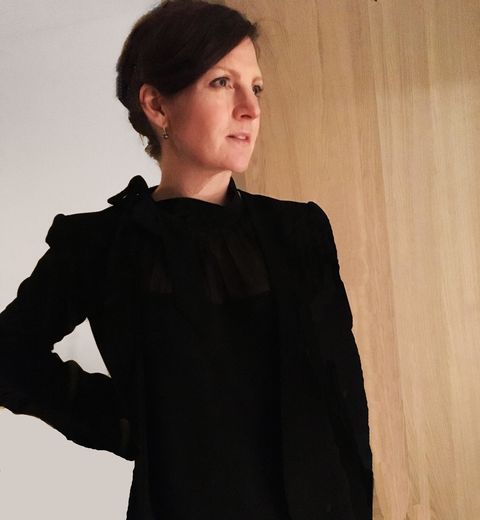 Jennifer Cutbill
Jennifer Cutbill
At functional levels, I imagine studios (professional and academic) across the world will be interrogating anew conceptions of minimum critical distances, optimal psychrometric ranges, and more resilient infrastructures for sheltering in place—along with new hybrids of digital-haptic engagement. What seems even more interesting, however, are the higher-order transformations regarding our conceptions of the aims of architecture, and our individual and collective roles within them. On this, a few thoughts for discussion.
First, we will need to shift focus from comfort (even “wellness” as currently conceived) to holistic health. COVID-19 has reminded us of a number of imperatives: that what we value most is our health; that our health is interdependent—on not only our individual and collective actions, but on the health of the living systems that connect and sustain us; and that we are capable of radical change when we work together to safeguard it. Through this lens, the COVID-19 emergency and the climate emergency are not separate issues, but aspects of a common crisis of intergenerational health ... and health equity. While designing for comfort can mask layers of cognitive dissonance around relationships between individual, community, and ecological health—akin to how it can be comfortable to sit at home and watch Netflix in pajamas eating cheesies with beer without any improvement on our health or that of the planet. Designing for intergenerational “planetary health” (a term defined by The Lancet and embraced by the UNFCCC, describing holistically the health of people and the ecological systems that sustain us) means that investing in pajama-clad cheesie-eating corollaries no longer cuts it, and that we must take a more holistic approach. To do this, we need to set our aims on improving health, rather than masking or minimizing harm, and implicitly embed resilience, regeneration, reconciliation, equity, inclusion, and building place-based capacity for it.
Second, in terms of what we build—or how we view what we build—it seems our focus needs to shift from individual buildings (as things) to something that better reflects our nested interdependence. Perhaps as interconnected nodes in larger, nested regenerative infrastructures. Ok that’s a mouthful, and a “mind-ful,” but something that seems worth thinking into. If the goal of life (as Janine Benyus poetically describes) is to “create conditions conducive to life”—i.e., to support mutual, co-evolving flourishing—what does that mean for not just the form and function of buildings but also for their role and purpose ... and ours in relation? And how can every project be approached as a catalyst for nurturing such efforts?
In 2013, the UK Treasury released an “Infrastructure Carbon Review” report, identifying a hierarchy of actions and associated carbon reduction impacts. The top two levers for change (not surprisingly) were to build less, and better still, to build nothing. Now, there are all kinds of reasons that new construction and retrofits of existing will still be required; but it does give one pause as we think about the future of our role(s)—especially in light of parametric algorithms and machine learning, and their potential for replacing services from code-compliance to form-generation ... and production. What (infra)structures are needed to support and improve intergenerational health equity, and what roles are we uniquely able to fill in support? Decades ago, Paul Hawken raised the idea of products as service, and Stewart Brand offered the concept of “pace layering.” Today we are seeing these made manifest in approaches to buildings as material banks—important not just for more integrated conceptions of temporal agency (and responsibility), but also new, more holistic valuation models. It would seem a next step is to expand beyond “material banks” to integrate more holistic forms of value investment—not just conservation and appreciation of original investments, but (re)generation of new value, with cascading compounding co-benefits. Unlike disciplines focused on solving singular problems, I think one of our superpowers is this kind of holistic “multi-solving.” Focusing on building these “muscles” seems critical as we move forward. And as Hawken asserts, “We can make no better higher-leverage investments for the future than improving the quality of designer’s 'mindware'.”
Lastly, in terms of additional critical superpowers to focus on as we co-create new, post-pandemic realities, I would offer another key capacity is our political agency of visualization. As regenerative economist Kate Raworth notes, “The most powerful tool in economics is not money, nor even algebra—it is a pencil—because with it you can redraw the world.” We are not the only profession to use “pencils,” but I would argue our potential to help redraw the world—in a way that is inspiring and empowering—is part of what sets architects and landscape architects apart.
A new, regenerative future is possible. One in which the living patterns of place are made visible, so they can be understood and engaged—through inclusive, integrative, and inspiring participatory processes, respecting indigenous wisdom and empowering communities in place—and design and development is harnessed as one of our most powerful tools for investing in intergenerational health equity (equity in terms of both being fair and impartial, and our shares in embedded planetary health capital). To change broken systems, we must first reimagine them; and then, as Buckminster Fuller urges, “Design new ones to make the old obsolete.” We aren’t the only ones with a key role to play in this, but I believe we have a unique capacity to help communicate and orchestrate; and I look forward to redesigning our instruments of service together as part of this regenerative symphony.
Published June 8, 2020 Permalink Citation
Malin, N. (2020, June 8). After the Pandemic, What’s Next for the Building Industry?. Retrieved from https://www.buildinggreen.com/op-ed/after-pandemic-what-s-next-building-industry



Add new comment
To post a comment, you need to register for a BuildingGreen Basic membership (free) or login to your existing profile.